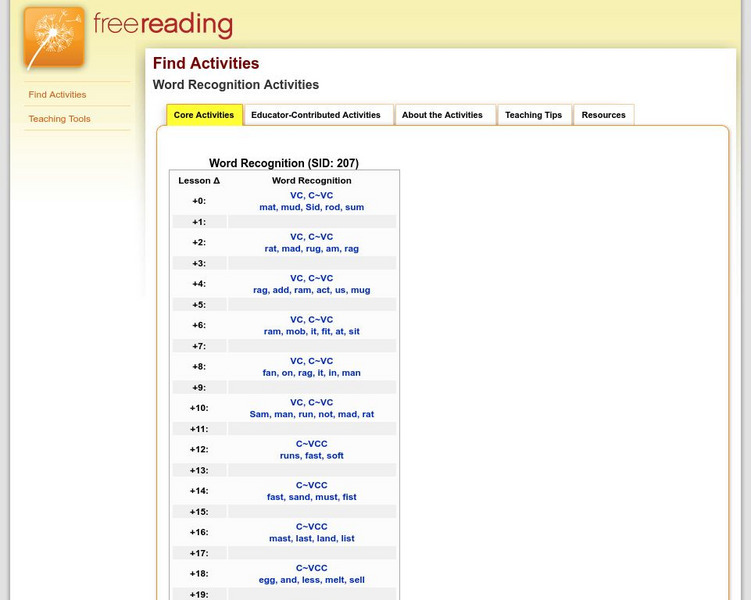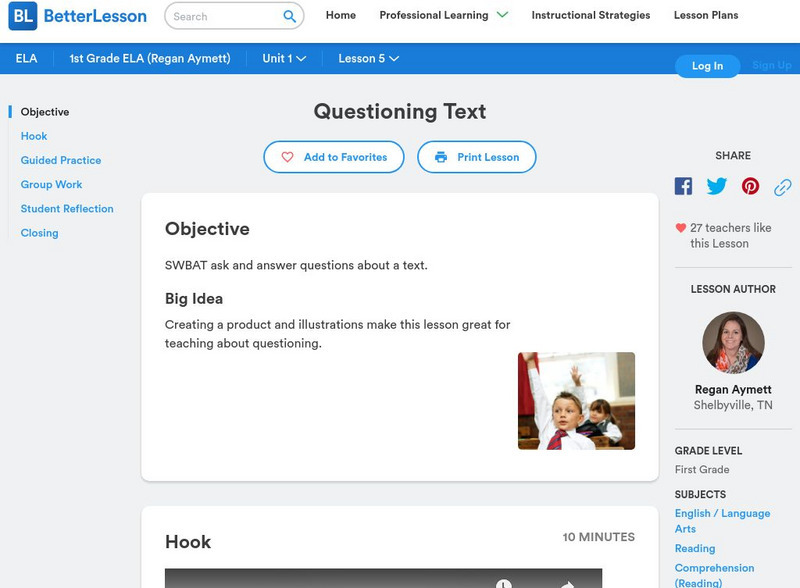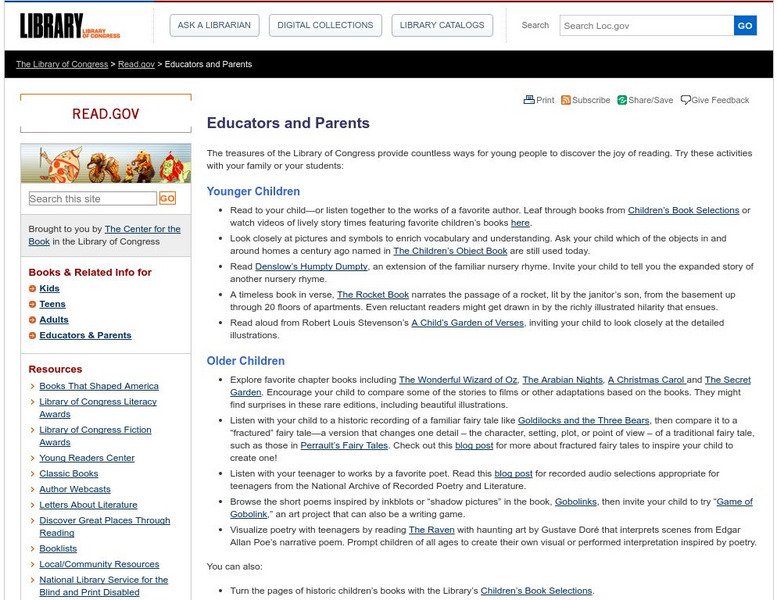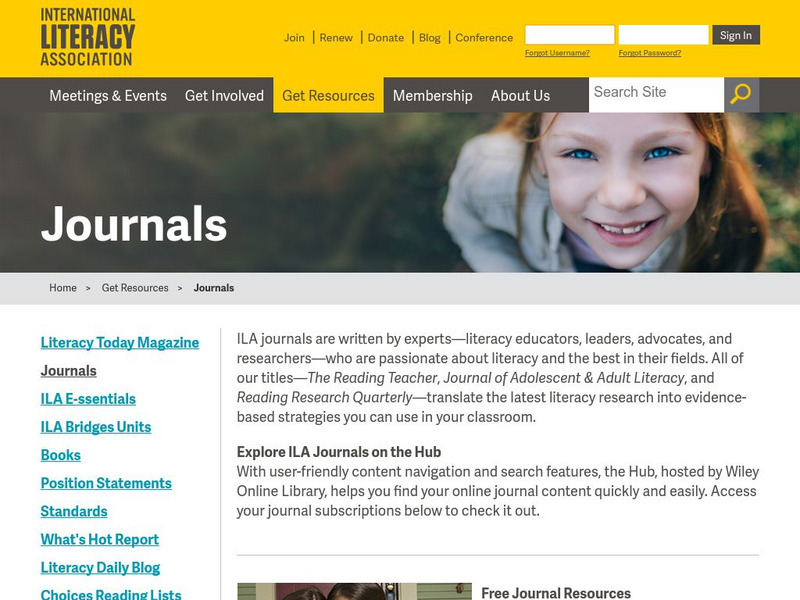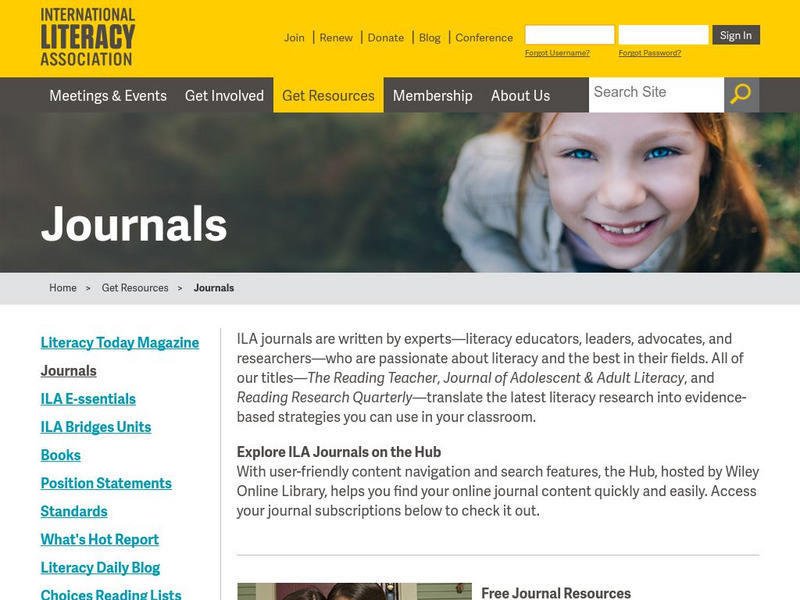Hi, what do you want to do?
ReadWriteThink
Read Write Think: Family Ties Making Connections to Improve Reading Comprehension
Contains plans for five lessons that teach students to make authentic connections to reading selections. Lessons use books such as "Bigmama?s" by Donald Crews, "The Snowy Day" by Ezra Jack Keats, and "The Relatives Came" by Cynthia...
Free Reading
Free Reading: Word Form Recognition Activities
A wonderful site full of tips for teaching Word-form recognition activities. This site has a plethora of links that provide an excellent way to practice and memorize the essential skills of recognizing words without sounding out each...
Free Reading
Free Reading: Guess What I'm Thinking?: Initial Sound Accuracy
A version of the "20 Questions" game. The instructor tells the class he is thinking of something that starts with, for example, /b/. The students have to come up with what the teacher is thinking of.
Better Lesson
Better Lesson: Questioning Text
Creating a product and illustrations make this lesson plan great for teaching about questioning. Students will ask and answer questions about a text via the assistance of a graphic organizer.
Reading Rockets
Reading Rockets: Descriptive Writing
This is a comprehensive article about what descriptive writing including what it is, why to teach it and strategies to teach it. It also features two videos Five Senses Graphic Organizer and Writing Poems as well as an annotated list of...
Reading Rockets
Reading Rockets: Onset/rime Games
Similar to teaching beginning readers about rhyme, teaching children about onset and rime helps them recognize common chunks within words. This can help students decode new words when reading and spell words when writing. This article...
Library of Congress
Library of Congress: read.gov: Educators
Parents and teaches can encourage reading with these author webcasts and links to teaching resources for novels, poetry, writing contests, and more.
Better Lesson
Better Lesson: Emergent Readers With and Emergent Reader
Students will sequence story events with the teacher and read an emergent reader in a guided setting. The chosen book, "Pilgrims and Wampanoag: Together They Were Better", has high use of sight words and high levels of picture support...
Scholastic
Scholastic: Investigating Nonfiction Part 3: Independent and Guided Reading
This article provides tips for using nonfiction with guided reading and independent reading. The following strategies are shared: ways to help kids select "just right" nonfiction books; lessons to use with nonfiction in guided reading...
LD Online
Ld Online: Learning Disabilities Online: Phoneme Awareness Activity
What do you know about phoneme activities for collaborative classrooms? This site will show how to develop your own activities to sharpen your students phonemic awareness skills. This informative resource will support any teacher's work...
Reading Rockets
Reading Rockets: Rti & Reading: Response to Intervention in a Nutshell
This article provides a quick overview of response to intervention (RTI) as it relates to reading. RTI is not a particular method or instructional approach, rather it is a process that aims to shift educational resources toward the...
Other
Saskatoon Public Schools: Instructional Strategies Online: Indirect Instruction
Learn about direct instruction and view a list of indirect teaching strategies including problem solving, case studies, reading for meaning, inquiry, and many more. Then click on each strategy in order to learn more about the strategy...
International Reading Association
Using Bilingual Books in Esl and Mainstreamed Classrooms
The authors explain strategies for using bilingual books to foster literacy development with ESL learners. They argue that the presence of books in other languages in the classroom library sends a clear message about the value of...
International Reading Association
Using Bilingual Books in Esl and Mainstreamed Classrooms
The authors explain strategies for using bilingual books to foster literacy development with ESL learners. They argue that the presence of books in other languages in the classroom library sends a clear message about the value of...
McGraw Hill
Mc Graw Hill: How to Use Strategies to Teach Students to Access Complex Texts
In this short video, the strategies of summarizing, clarifying, and asking-answering questions are used. These instructional tools will help teachers show students how to access complex texts. [5:54] CCSS.ELA-Literacy.CCRA.R.10
International Reading Association
Reading Online Articles: Comprehension Instruction
An article on improving reading comprehension through time-tested strategies as well as a summary of new hypotheses about effective comprehension instruction.
LD Online
Ld Online: Beginning Reading and Phonological Awareness
This site from the LD OnLine focuses on beginning reading and phonological awareness for students with learning disabilities. Check out the information presented in this informative article.
Annenberg Foundation
Annenberg Learner: Conversations in Literature
A research based workshop by Judith Langer on bringing the joy of reading literature to your class. An excellent professional development resource, with eight videos on demand. Topics include Responding as Readers, Objectifying the Text,...
Other
Strategies for Reading Comprehension:reciprocal Teaching
Use this page to understand the reciprocal teaching strategy that includes the role of the clarifier in student groups.
Daily Teaching Tools
Daily Teaching Tools: Cooperative Learning: Great Grouping Strategies
This Daily Teaching Tools resource provides a flexible grouping strategy. An explanation is provided that explains how to use tongue depressers to divide students into cooperative learning groups.
Other
Big Life Journal: How to Teach Problem Solving Skills to Kids (Ages 3 14)
How you teach problem-solving to kids depends on their age. Read on to learn key strategies for teaching problem-solving to kids, as well as some age-by-age ideas and activities.
Other
Tinkergarten: Books That Help Us Teach Problem Solving
One of the most helpful, and easy, ways to teach problem-solving is to read, fall in love with and make sense of books that help teach problem-solving strategies. This article lists a few examples of books to use in your classroom.
International Literacy Association
International Literacy Association: Teaching the Skill of Self Correction
As teachers, one of our goals is for every student to read and comprehend at or above grade level. We want students to take ownership of their reading, monitoring themselves while they are reading and self-correcting when they need to....
Reading Rockets
Reading Rockets: Content Area Literacy
Content area lessons require specific techniques and knowledge that help students navigate different types of texts. Here you will find articles, videos, teaching strategies, webcasts, and research reports.






